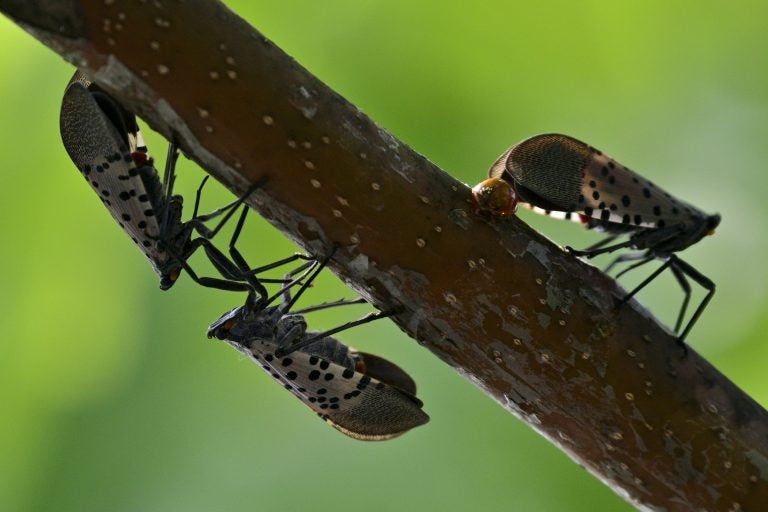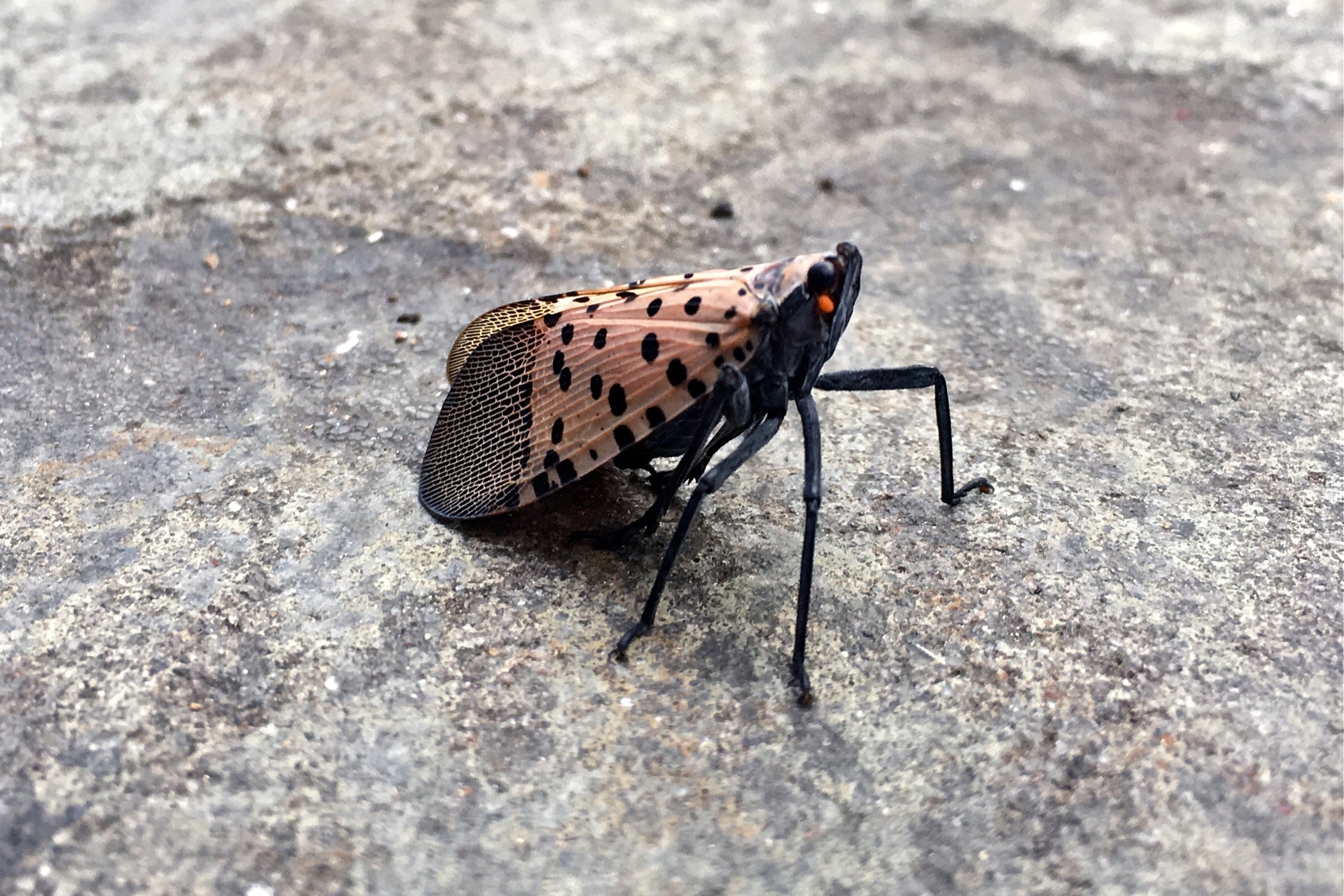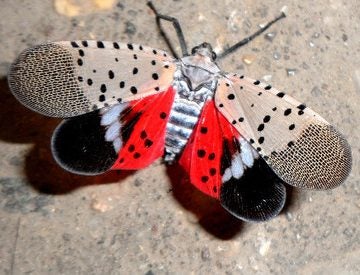Backyard warriors ready for lanternfly egg-laying season — but experts say check the facts first
Pa. and N.J. residents are turning to online forums for help fighting the invasive species, but a spotted lanternfly expert urges them to check their facts first.
Listen 1:52
Spotted lanternflies colonize trees along a pathway on the banks of the Green Lane Reservoir in Berks County, Pa., on September 16, 2018. (Bastiaan Slabbers for WHYY)
The tail-end of summer means the moth-like spotted lanternfly will begin laying its eggs in a few weeks. Many Pennsylvania and New Jersey residents aren’t taking the threat of the invasive species lightly, and are increasingly going out of their way to kill the critters and their larvae.
“My husband’s outside with the broom — there’s like 30 on my deck right now,” said Carin Weidner, who’s been fighting the red and black pest all summer at her Collegeville home. “We can’t even go outside most of August and part of September.”
The problem has gotten so bad, she and her husband have started to find fun ways to get rid of them and post their escapades to YouTube. For instance, her husband will take a broom and karate-chop the critters on their deck to entertain their young daughter — but they’ve quickly learned karate chops are no match for the lanternflies.
The Southeast Asian spotted lanternfly feeds on the sap of trees and plants, while leaving trails of poop that attract a mold that weakens and kills the plant.
“They’re killing our trees, our plants, and I already know people who have had to remove trees,” said Weidner, who had to cut down a tree of her own because of the number of lanternflies it was attracting, despite treating it with an insecticide.
Weidner has also started a Facebook group where about 500 members share the zip codes of new sightings and ways to kill the lanternfly and its offspring.
There are spotted lanternfly groups in Lehigh and Chester counties, one dedicated for all of Pennsylvania — plus gardening groups in Philly and South Jersey that also post the latest research.
Egg-laying season is coming
And the sightings are increasing. Fourteen counties in Pennsylvania are under a state quarantine, which requires all residents and businesses to inspect materials moved in and out of the area for spotted lanternflies. Businesses are also required to complete a training and get permits stating they have done everything possible to prevent spreading the pest outside the quarantined area.
At the end of August, another five New Jersey counties were put under quarantine in the state, bringing the total to eight.
Amy Boughter’s tree-lined neighborhood is a short distance from National Park. The Gloucester County town was recently put under a state quarantine after lanternfly sightings.
As the egg-laying season nears, Boughter is getting ready to grab her debit card and scrape any grey blobs she finds — though that’s yet to happen — and plop them in alcohol-soaked bags.
“I’ve looked up how you’re supposed to kill the eggs and that seems to be the more important thing, to kill the eggs than the actual lanternfly,” she said.
Except, that rule is not set in stone, according to one expert.
Fact-check online advice and other tips

However helpful all the tips and tricks spread through online forums and word of mouth may be, they might not be 100% accurate, says Heather Leach, who is charged with teaching the public about the spotted lanternfly for Penn State University.
“Because so many people are affected by it, you inevitably get some miscommunication, misinformation,” she said.
As for what people should prioritize killing, Leach said it depends on what kind of tree the lanternfly is attacking.
If it’s a shorter tree where you can scrape off all the eggs, focus on the eggs.
If it’s a taller tree, Leach said you might not be able to get all the eggs at the top, in which case, focus on killing the lanternfly before it lays its eggs.
There are other points of confusion.
For example, using binding tape as a way to capture the lanternfly is often frowned upon by members of these forums who post videos of other mammals like bats or birds getting caught on the sticky tape.
But Leach said the tape is still an effective tool if some adjustments are made.
Making the bands thinner and “caging” the tape with chicken wire or screen mesh can divert other mammals, while also catching the intended target.
Some group members also claim that planting trees discourages the spread. While environmentally friendly, there’s no research to back that up, Leach said.
Homemade insecticides, like dish soap, vinegar, and spices like cayenne pepper, are also questionable.
“What we’re finding is that this is often really unsafe. Things don’t have … EPA-approved labels, so we don’t really have the instructions on how to use them or their potential nontarget effects,” Leach said.
Instead, there are organic solutions that won’t stick around the environment, such as neem oil and essential oils, as suggested on the Penn Extension website.
Above all else, don’t forget to report your sightings to your county entomologist, state agriculture department, or local spotted lanternfly hotline so officials can trace the spread.
Though the internet can breed misinformation, Leach said she welcomes the enthusiasm from residents while scientists continue to make headway in lanternfly research, which suggests natural fungi could help eradicate the species.
“I’m so thrilled that more people are getting involved and stepping up because we need the help,” she said. “I think this is the only way we’re going to really make headway is if we get everybody out there to do what they can.”
WHYY is your source for fact-based, in-depth journalism and information. As a nonprofit organization, we rely on financial support from readers like you. Please give today.




